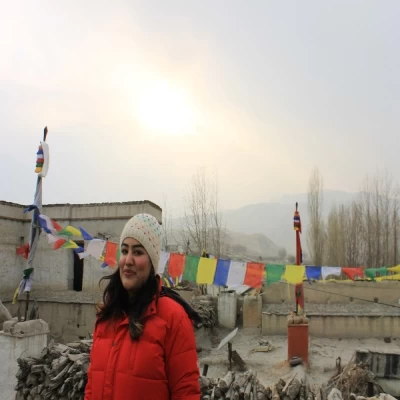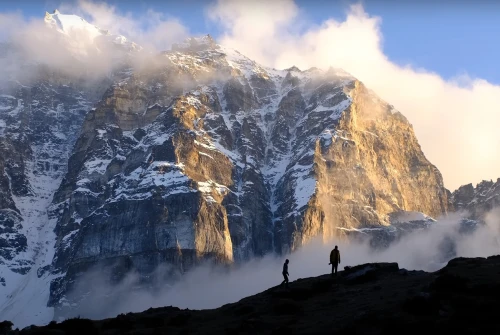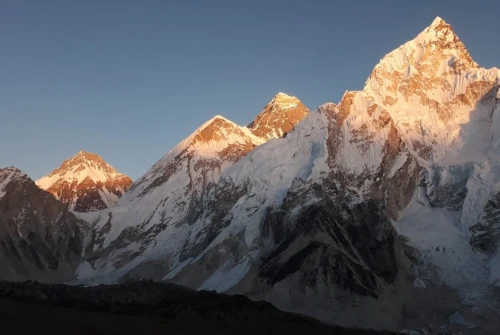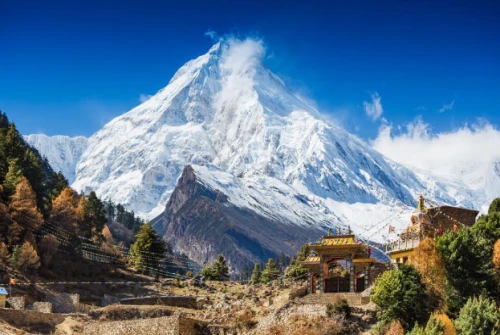The Everest Base Camp trek stands as one of the most iconic adventures on Earth, drawing thousands of trekkers annually to the roof of the world. We understand that planning this extraordinary journey raises numerous questions, and we've compiled this comprehensive guide to address every concern you might have before embarking on this life-changing expedition.
What is the Best Time to Trek to Everest Base Camp?
We recommend trekking during the pre-monsoon season (March to May) and the post-monsoon season (September to November). These periods offer stable weather conditions, clear skies, and optimal visibility of the Himalayan peaks. Spring presents blooming rhododendrons along the trail, while autumn provides crystal-clear mountain views and comfortable temperatures. Winter treks are possible but considerably more challenging due to extreme cold and heavy snowfall at higher elevations.
How Difficult is the Everest Base Camp Trek?
The Everest Base Camp trek difficulty is classified as moderate to challenging. We emphasize that while no technical climbing skills are required, the trek demands good physical fitness, mental determination, and proper acclimatization. The journey involves walking 5-7 hours daily across varied terrain, ascending to altitudes exceeding 5,300 meters. The primary challenge lies in managing altitude-related issues rather than technical difficulty.
How Long Does the Trek Take?
The standard Everest Base Camp itinerary spans 12-14 days, including acclimatization days. We structure our treks to include proper rest days in Namche Bazaar and Dingboche, essential for altitude adjustment. Shorter variations exist but significantly increase altitude sickness risks. Some trekkers extend their journey to 16-18 days to explore additional destinations like Gokyo Lakes or Island Peak.
What Level of Fitness is Required?
We recommend starting your physical preparation at least 8-12 weeks before departure. Your training regime should include cardiovascular exercises like running, cycling, or swimming for 45-60 minutes, 4-5 times weekly. Incorporate strength training focusing on legs, core, and back muscles. Practice hiking with a weighted backpack on varied terrain to simulate trek conditions. Previous hiking experience, while beneficial, isn't mandatory if you maintain adequate fitness levels.
What About Altitude Sickness?
Acute Mountain Sickness (AMS) represents the most significant concern on this trek. We implement careful acclimatization schedules, following the principle of "climb high, sleep low." Common symptoms include headaches, nausea, dizziness, and fatigue. We ensure rest days at strategic locations, monitor trekkers closely, and advise immediate descent if severe symptoms develop. Proper hydration, gradual ascent, and avoiding alcohol significantly reduce AMS risks.
Do I Need a Guide or Can I Trek Independently?
While independent trekking was historically permitted, current regulations require all Everest region trekkers to hire either a licensed guide or join organized groups. We believe this regulation enhances safety, supports local communities, and ensures environmental protection. Experienced guides provide invaluable navigation assistance, cultural insights, emergency response capabilities, and logistical support throughout your journey.
What Permits are Required?
We arrange two essential permits for the trek: the Sagarmatha National Park Entry Permit and the Khumbu Pasang Lhamu Rural Municipality Permit. These documents support conservation efforts and local development. All permits must be obtained before entering the trekking region, and we handle this administrative process seamlessly for our clients.
How Much Does the Trek Cost?
Everest Base Camp trek costs vary significantly based on service levels, group size, and inclusions. Budget treks start around $1,200-1,500, mid-range options cost $1,800-2,500, and luxury packages exceed $3,000-5,000. These prices typically cover guides, porters, permits, accommodation, meals during the trek, and airport transfers. International flights, travel insurance, personal equipment, and tips remain additional expenses.
What Should I Pack?
We provide detailed packing lists emphasizing layered clothing systems. Essential items include a quality sleeping bag rated to -15°C, waterproof jacket and trousers, thermal base layers, trekking boots with ankle support, sun protection, headlamp with spare batteries, water purification tablets, and personal first aid supplies. We recommend keeping your pack weight under 10-12 kilograms, with porters carrying main luggage.
What About Accommodation During the Trek?
We arrange accommodation in teahouses throughout the journey, offering basic but comfortable facilities. Rooms typically contain two beds with mattresses, pillows, and blankets. Bathroom facilities range from attached Western-style toilets in lower villages to shared squat toilets at higher altitudes. Hot showers are available for additional charges in most locations, though we advise conserving water and energy.
What Food is Available on the Trek?
Teahouse menus offer surprisingly diverse options including traditional Nepali dal bhat, Tibetan dishes, pasta, pizza, soups, and breakfast items. We recommend eating predominantly carbohydrate-rich foods for sustained energy. Food quality and variety decrease at higher elevations due to transportation challenges. We always advise drinking only treated or boiled water to prevent waterborne illnesses.
Is Travel Insurance Necessary?
We absolutely require comprehensive travel insurance covering high-altitude trekking up to 6,000 meters and emergency helicopter evacuation. Medical emergencies at altitude can escalate rapidly, and helicopter rescue from base camp costs $5,000-10,000. Standard travel insurance policies exclude high-altitude activities, so verify coverage specifically mentions trekking in Nepal above 5,000 meters.
Can I Charge Electronics on the Trek?
Electricity availability decreases at higher altitudes. Most teahouses provide charging services for additional fees (typically $2-5 per device). We recommend carrying portable power banks with substantial capacity (20,000+ mAh) and solar chargers. Conserve battery life by minimizing device usage and keeping electronics warm, as cold temperatures drain batteries rapidly.
What About Internet and Phone Connectivity?
Mobile network coverage extends to Gorak Shep through Ncell and Nepal Telecom providers. Wi-Fi is available at most teahouses for daily or hourly charges. Connection speeds are slow and unreliable at higher elevations. We suggest purchasing local SIM cards in Kathmandu with data packages. Satellite phones provide ultimate reliability but involve significant rental costs.
Are There ATMs Along the Trail?
The last reliable ATM is located in Namche Bazaar. While Lukla has an ATM, it frequently malfunctions or runs out of cash. We strongly advise withdrawing sufficient Nepali rupees in Kathmandu before flying to Lukla. Carry extra cash as teahouses accept only cash payments, and credit cards are unusable along the trail.
What is the Maximum Altitude Reached?
The trek reaches Everest Base Camp at 5,364 meters (17,598 feet). Many trekkers also climb Kala Patthar at 5,545 meters (18,192 feet) for superior views of Mount Everest's summit. These altitudes represent less than half of Everest's summit elevation but still require serious acclimatization and altitude awareness.
Can Children Complete This Trek?
While no official age restrictions exist, we generally recommend the trek for children aged 12 and above with excellent fitness levels and previous trekking experience. Younger children have successfully completed the journey, but parents must carefully assess their child's physical capabilities, mental maturity, and ability to communicate symptoms of altitude sickness.
Is Solo Female Travel Safe?
We consider the Everest Base Camp trek relatively safe for solo female travelers. The trail is well-established with constant traffic during peak seasons. However, we always recommend hiring guides, trekking in groups when possible, and maintaining standard safety precautions. Nepali people are generally respectful and helpful toward foreign trekkers regardless of gender.
What Wildlife Might I Encounter?
The Sagarmatha National Park hosts diverse fauna, including Himalayan tahr, musk deer, snow leopards (rarely seen), mountain foxes, and various bird species, including the colorful Impeyan pheasant (Nepal's national bird). We educate trekkers on respecting wildlife, maintaining distance, and never feeding animals.
How Do I Prevent and Treat Blisters?
Blister prevention begins with properly fitted boots broken in weeks before departure. Wear moisture-wicking sock liners beneath quality hiking socks. We recommend applying tape or moleskin to potential hot spots before blisters develop. If blisters form, we carry comprehensive first aid supplies including sterile needles for drainage, antibiotic ointment, and appropriate bandaging materials.
What Cultural Etiquette Should I Follow?
We emphasize respecting Sherpa Buddhist culture throughout the journey. Always walk clockwise around mani stones and stupas, remove shoes before entering monasteries, ask permission before photographing people, dress modestly, and avoid public displays of affection. Learning basic Nepali phrases demonstrates respect and enhances cultural connections.
Can I See Mount Everest from Base Camp?
Paradoxically, Mount Everest's summit isn't visible from Base Camp itself due to surrounding peaks. We always recommend ascending Kala Patthar for spectacular Everest views. Other viewpoints offering exceptional panoramas include the Everest View Hotel near Namche Bazaar and various locations throughout the trek.
What Emergency Services are Available?
We maintain constant communication with emergency rescue services and helicopter companies. Medical posts exist in Pheriche and Manang, staffed by volunteer doctors during peak seasons. Our guides carry comprehensive first aid equipment, satellite communication devices, and emergency oxygen supplies. Evacuation helicopters can reach most locations within hours if the weather permits.
How Do I Deal with Jet Lag After Arriving in Kathmandu?
We recommend arriving in Kathmandu 2-3 days before your trek begins. This buffer provides jet lag recovery time, permit processing, gear checks, and contingency for delayed flights. Maintain hydration, expose yourself to natural daylight, and adjust gradually to local meal times.
What Happens if Weather Delays My Flight to Lukla?
Lukla airport experiences frequent weather-related delays, particularly duringthe monsoon and winter months. We always recommend flexible return flight bookings with buffer days. If delays occur, helicopter charters offer expensive alternatives ($500-800 per seat). Some itineraries include contingency days specifically for weather delays.
Can I Extend My Trek to Other Destinations?
We offer numerous trek extensions, including the Gokyo Lakes trek, the Three Passes trek, Island Peak climbing, or combinations thereof. These extensions require additional permits, time, and fitness levels. We design custom itineraries matching your interests, schedule, and capabilities.
What Environmental Responsibilities Do I Have?
We practice Leave No Trace principles strictly. This includes packing out all non-biodegradable waste, using designated toilet facilities, avoiding single-use plastics, respecting wildlife, staying on established trails, and supporting eco-friendly teahouses. The Khumbu region faces significant environmental pressures, and responsible trekking practices are essential for preservation.
Do I Need Vaccinations?
We advise consulting travel medicine specialists regarding vaccinations at least 6-8 weeks before departure. Commonly recommended vaccinations include hepatitis A and B, typhoid, tetanus, and routine immunizations. Altitude sickness prevention medications like Diamox require prescriptions and medical consultation regarding appropriateness and dosing.
What Training Should I Do Specifically?
Our training recommendations focus on cardiovascular endurance, leg strength, and hiking with weighted packs. Practice on stairs, hills, and uneven terrain whenever possible. Include long hikes (4-6 hours) with elevation gain carrying 8-10 kilogram packs. Mental preparation through meditation or visualization exercises helps manage the psychological challenges of high-altitude trekking.
Can I Complete the Trek with Pre-existing Medical Conditions?
Trekkers with controlled medical conditions like asthma, diabetes, or heart conditions have successfully completed the trek after a thorough medical evaluation. We require detailed medical assessments, physician clearance letters, and comprehensive travel insurance. Certain conditions, like severe heart disease, uncontrolled hypertension, or pregnancy, represent absolute contraindications for high-altitude trekking.
What Makes This Trek So Special?
Beyond the physical achievement, the Everest Base Camp trek offers profound cultural immersion, spectacular natural beauty, personal transformation, and connection with the legendary mountaineering history. We witness the resilience and warmth of Sherpa communities, experience Buddhist spirituality, and challenge ourselves in ways that create lasting memories and personal growth.
We've trekked this route dozens of times, and each journey remains uniquely meaningful. Whether you're drawn by adventure, photography, personal challenge, or spiritual seeking, the Everest Base Camp trek delivers extraordinary experiences that transcend typical travel adventures. Our expertise ensures you're thoroughly prepared for this magnificent Himalayan journey.



 based on 60 reviews
based on 60 reviews

